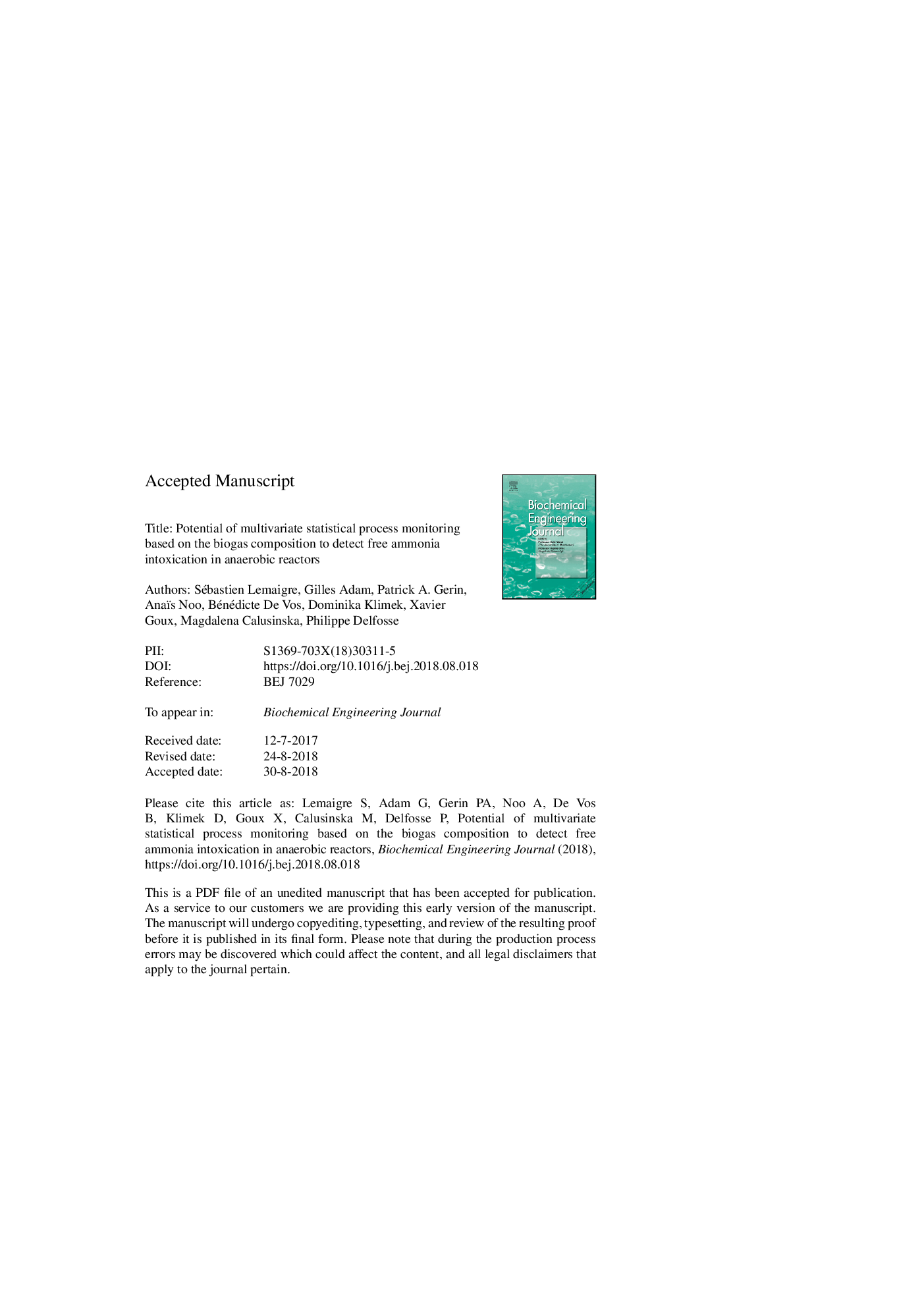| Article ID | Journal | Published Year | Pages | File Type |
|---|---|---|---|---|
| 10149894 | Biochemical Engineering Journal | 2018 | 34 Pages |
Abstract
Three anaerobic digestion reactors were initially maintained at steady-state with low nitrogen input, then progressively exposed to increasing nitrogen input until extreme ammonia intoxication, leading to interruption of biogas production. Such interruption occurred for a free ammonia nitrogen (FAN) concentration of about 5âg Lslurryâ1. A fourth reactor used as a control was maintained at low nitrogen steady-state. The biogas composition (CH4, CO2, H2 and H2S) was recorded over time and data were fed into a multivariate statistical process control model based on principal components analysis (PCA-MSPC). Static PCA-MSPC failed to distinguish between the actual reactor performance decrease and the drift of the in-control process baseline. However, recursively updated PCA-MSPC (effective memory length of 14 days, i.e. 0.25 hydraulic retention time) allowed detection of the early signs of FAN induced process dysfunction, which were simultaneous with drastic changes in the microbiome of the replicate reactors. However, the process control model was not able to adapt to a drastic modification of the microbiome. Propionate continuously accumulated since the detection of the first signs of process dysfunction.
Keywords
LNRSPETANOLRHNRHRTHDSTICIPVUCLMSPCrRNAVFADNAOTUPCAdeoxyribonucleic acidribosomal ribonucleic acidvolatile fatty acidElectronic noseE-NosePrincipal components analysisPrincipal component analysisTotal solidsvolatile solidshydraulic retention timefresh matterMonitoring modelBMPprincipal componentOrganic loading ratefree ammonia nitrogenAnaerobic digestionoperational taxonomic unitbiochemical methane potentialFANGas chromatographytotal ammonia nitrogenTotal Inorganic CarbonMultivariate statistical process control
Related Topics
Physical Sciences and Engineering
Chemical Engineering
Bioengineering
Authors
Sébastien Lemaigre, Gilles Adam, Patrick A. Gerin, Anaïs Noo, Bénédicte De Vos, Dominika Klimek, Xavier Goux, Magdalena Calusinska, Philippe Delfosse,
